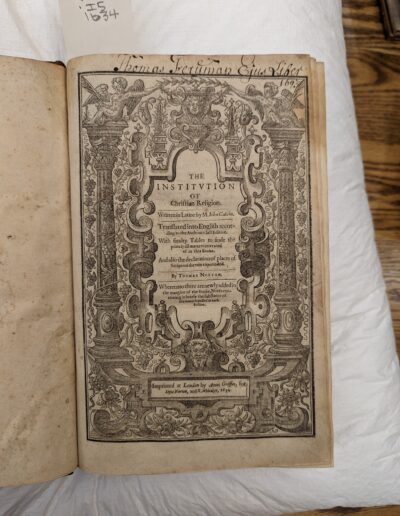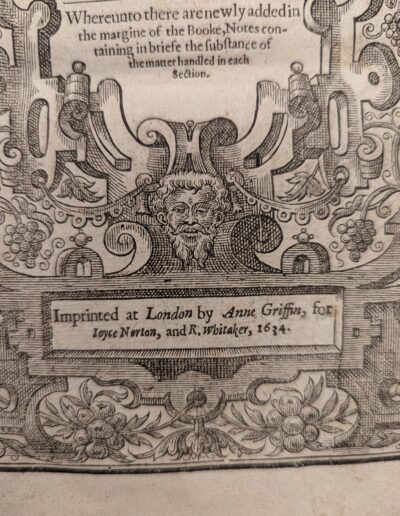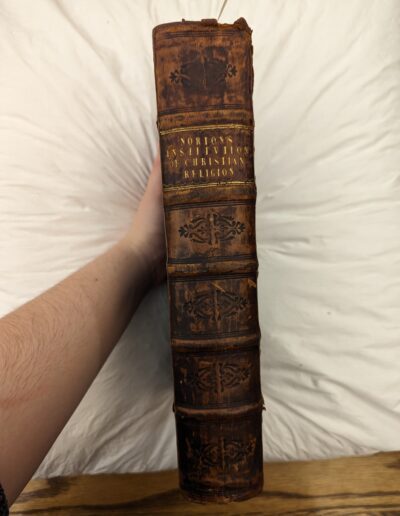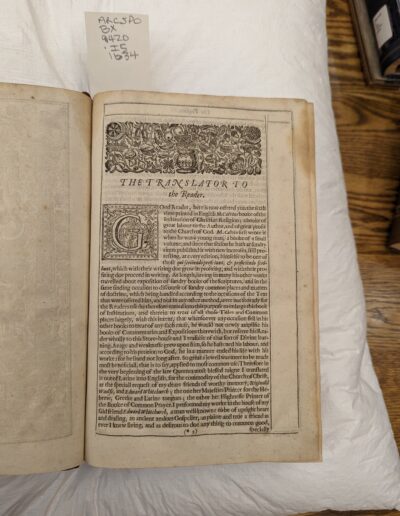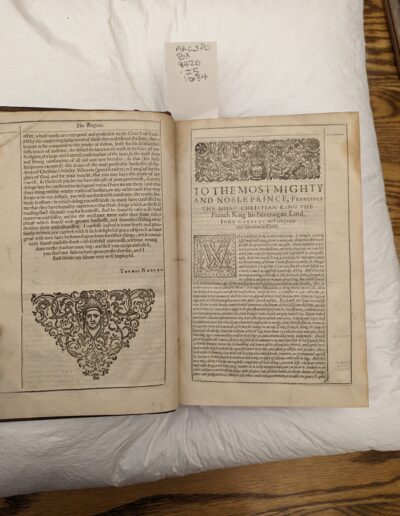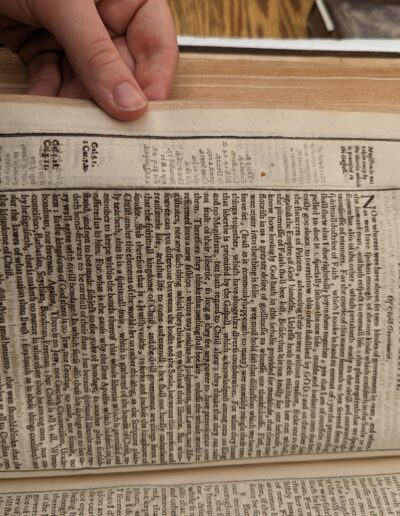Anne Griffin

Anne Griffin took over the London-based printing business of her husband Edward after he died in 1621. Her work was more radical than that of many of the women included in this exhibition. Pieces like the Institution of the Christian Religion, displayed here, were a part of her theological work which provided criticism of both the church and the state. Griffin risked her career to publish pro-protestant texts. In 1637 she was officially reprimanded by Arch-Bishop Laud who threatened to close her press for sedition because she had printed Thomas Becon’s Displaying of the Popish Masse which called into question the sanctity of the Catholic tradition. While any printer could lose their press to such charges, British law stipulated that women in particular could control the shops of their deceased husbands’ only as long as their work was in line with the values of those in power. This elevated the stakes for women like Griffin who challenged authority with their printing.
Griffin was a part of a network of women in print. She frequently collaborated with publisher Anne Boler and trained her daughter-in-law Sarah Griffin who would eventually takeover the press. The tradition of passing the skill of printing from generation to generation is a common feature of the trade particularly amongst women. As women were not allowed to take part in formal apprenticeship processes, informal mentorships like that between Anne and Sarah Griffin became an essential part of the training for many women within the print industry.

